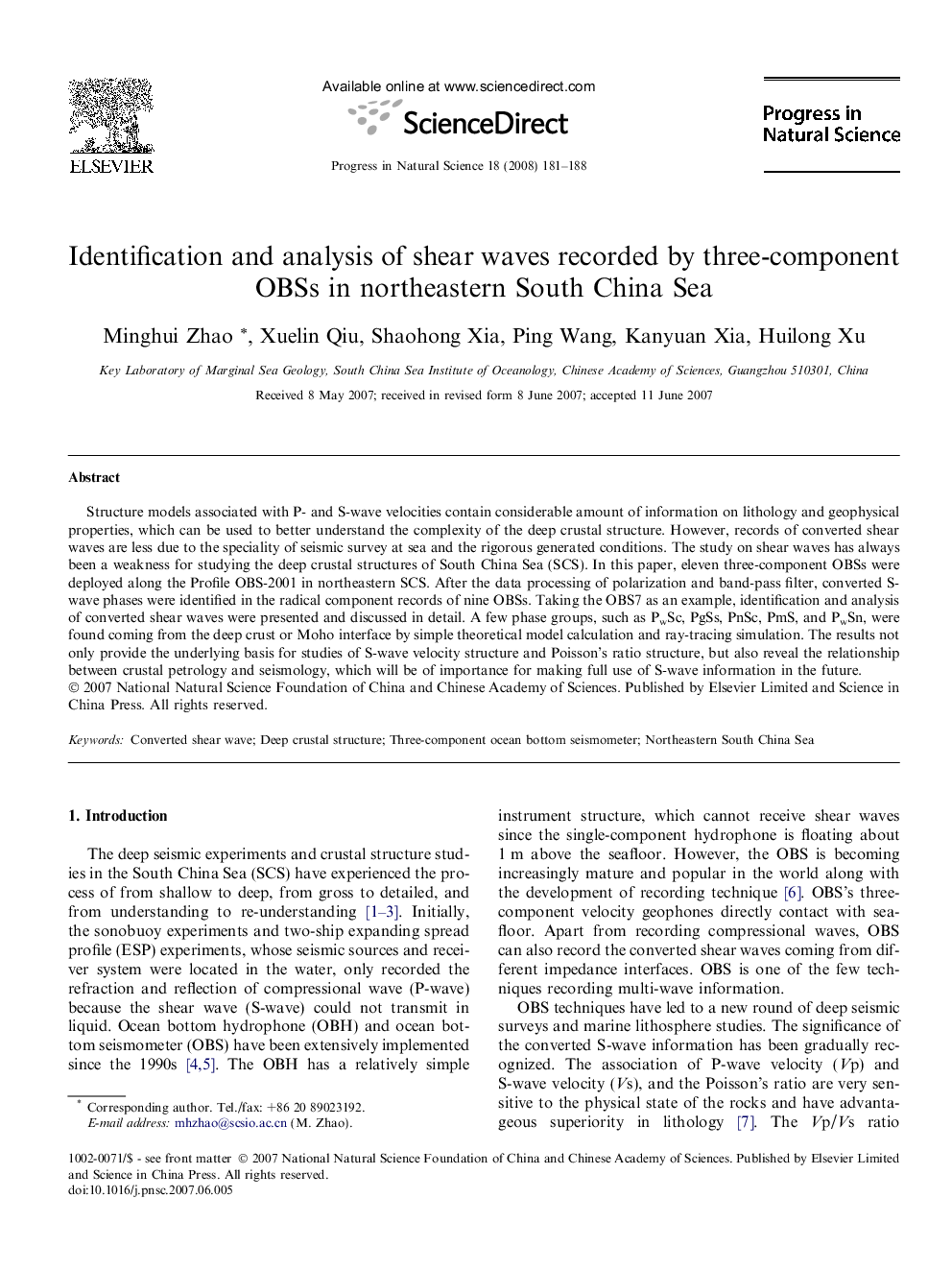| Article ID | Journal | Published Year | Pages | File Type |
|---|---|---|---|---|
| 1549009 | Progress in Natural Science: Materials International | 2008 | 8 Pages |
Structure models associated with P- and S-wave velocities contain considerable amount of information on lithology and geophysical properties, which can be used to better understand the complexity of the deep crustal structure. However, records of converted shear waves are less due to the speciality of seismic survey at sea and the rigorous generated conditions. The study on shear waves has always been a weakness for studying the deep crustal structures of South China Sea (SCS). In this paper, eleven three-component OBSs were deployed along the Profile OBS-2001 in northeastern SCS. After the data processing of polarization and band-pass filter, converted S-wave phases were identified in the radical component records of nine OBSs. Taking the OBS7 as an example, identification and analysis of converted shear waves were presented and discussed in detail. A few phase groups, such as PwSc, PgSs, PnSc, PmS, and PwSn, were found coming from the deep crust or Moho interface by simple theoretical model calculation and ray-tracing simulation. The results not only provide the underlying basis for studies of S-wave velocity structure and Poisson’s ratio structure, but also reveal the relationship between crustal petrology and seismology, which will be of importance for making full use of S-wave information in the future.
